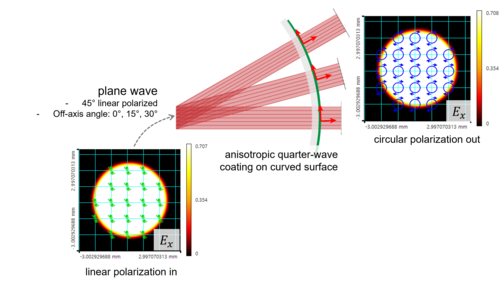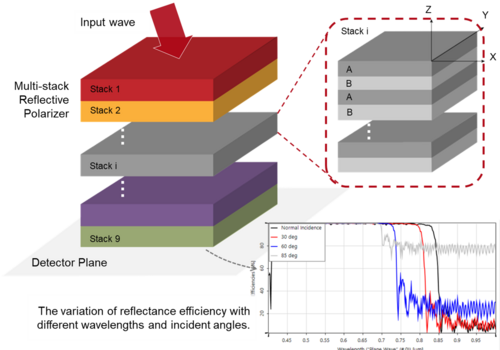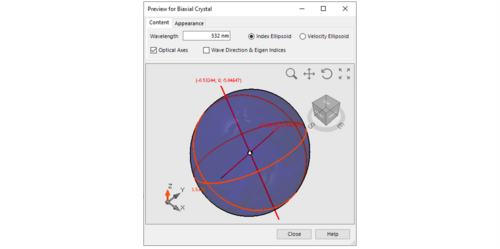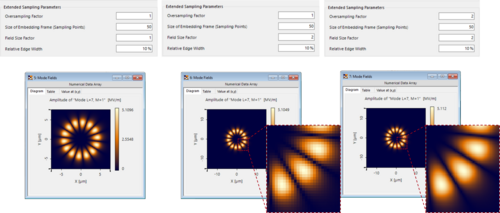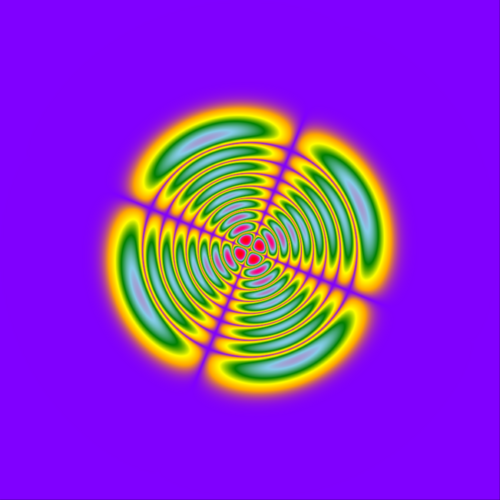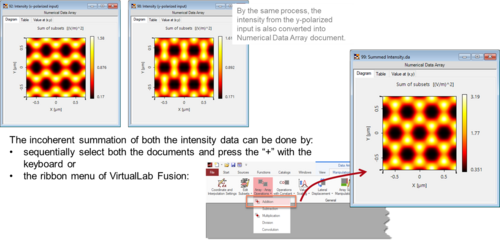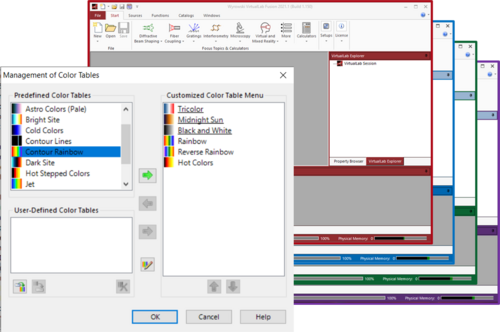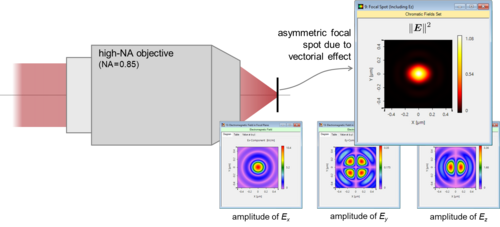What’s new?
Birefringence Effects on Curved Surfaces
In order to provide additional design freedom in terms of polarization control and multiplexing, in many applications anisotropic layers are attached to the surfaces of optical components.
As the birefringence effect depends strongly on the orientation of the crystal axis with respect to the direction of the incoming light, the discussion of such kind of components is especially interesting when the coating is applied to a curved surface.
Read morePolarization Effects in Anisotropic Components
Birefringence and other polarization effects are a major part of any simulation of anisotropic optical components, which feature prominently in many applications, the fabrication of liquid crystal displays among them.
VirtualLab Fusion gives you the option to include anisotropic media in your system, in the form of coating layers or in different components, like the Stratified Media component or the Crystal Plate. This allows for a complete simulation of single and multi-layer polarizers as demonstrated in the examples below.
Anisotropic Media for Coatings & Components
Anisotropic media, and crystals in particular, have long been linchpin components for various applications, including lasers and display technologies.
A HIGHLIGHT OF THE LATEST RELEASE, 2021.1
For the design, simulation and optimization of such kind of optical setups, VirtualLab Fusion provides a fast and rigorous electromagnetic field solver
that models the propagation of the electromagnetic field through anisotropic media, including polarization effects like conical refraction and birefringence.
Propagation through Multimode Fibers
Multimode fibers are an integral part of most optical communication technologies. For a sound modeling of such structures, accurate propagation of the fiber modes and their interference is necessary. In VirtualLab Fusion it is possible to use Bessel and Laguerre Polynomials to describe the fiber modes, for single-core fibers as well as graded-index ones. The resulting modes can then also be propagated while considering additional effects like e.g. atmospheric turbulence.
Read moreNew Technologies in VirtualLab Fusion
The new version 2021.1 provides our users with solutions for more applications. Also we come with a new workflow which enables a seamless transition from ray to full
physical-optics modeling. This way we simplify the usage of the amazing modeling features in VirtualLab Fusion.
Polarization and Fully Vectorial Physical Optics with VirtualLab Fusion
One of the most widely recognized advantages of physical optics as a simulation technology is the breadth of information it can provide about a system. The vectorial nature of the electromagnetic field, and the very often complex effects that arise from it as the light propagates in a system, are no small part of this consideration. That is why in VirtualLab Fusion we always work with the full vector field information.
Below you can find some illustrative examples that showcase the potential of VirtualLab Fusion in situations specifically related to polarization and vectorial effects.
Read morePersonalization through Global Options
To accommodate the variety that naturally exists in personal preferences, as well as to cater to the different specifications of the computing hardware available to each of our users, VirtualLab Fusion provides tools to tailor its configuration to your individual circumstances. Below we demonstrate how to personalize two different groups of settings in the Global Options: on the one hand, those pertaining to the graphic display of data and general visualization; on the other, performance related parameters related to the specifications of the computer which is running VirtualLab Fusion.
Read moreFocal Region Investigation
Lenses are, among all optical components, probably the most widely used, and focusing of light is possibly the most typical task in optics. Although it can seem trivial, the behavior of light in a focal region can be complex and is therefore worthy of in-depth investigation. As an example, in the case of focusing with a high-NA objective lens, the focal spot is known to show asymmetry, and consideration of the vectorial nature of light turns out to be necessary. VirtualLab’s representation of light as an electromagnetic wave in a fully vectorial approach enables the analysis of these polarization-dependent effects in detail. Moreover, the properties of light in the focal region can be thoroughly investigated with the help of different detectors. In combination with the Parameter Run feature the field evolution through the focal region can be analyzed as well.
Read more



